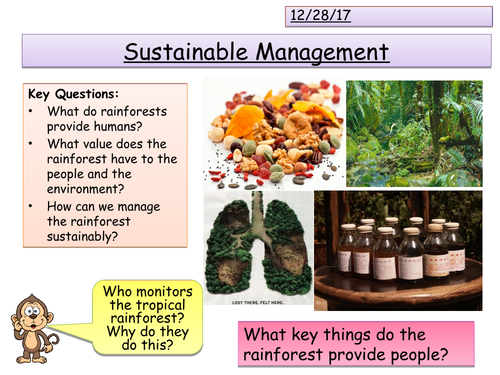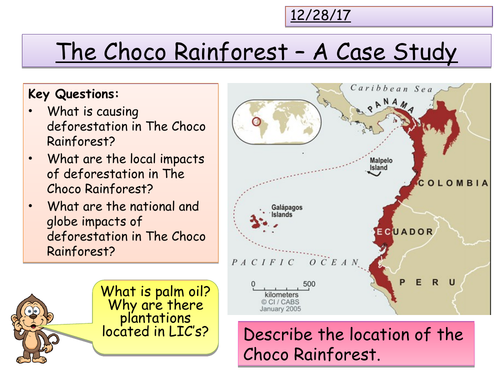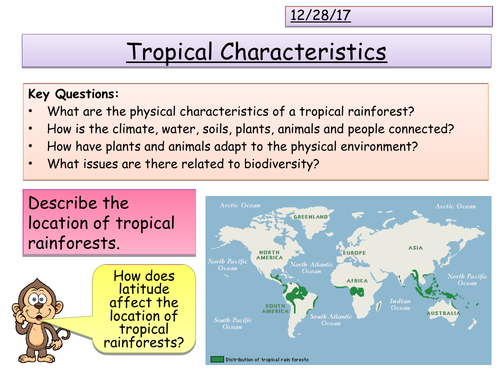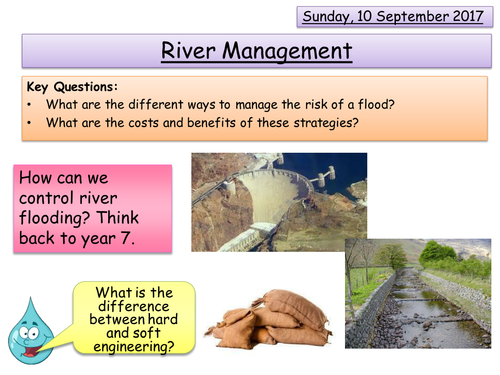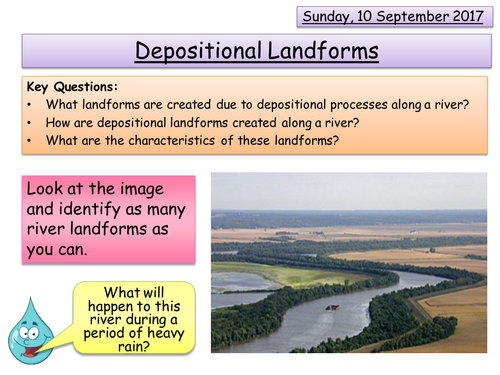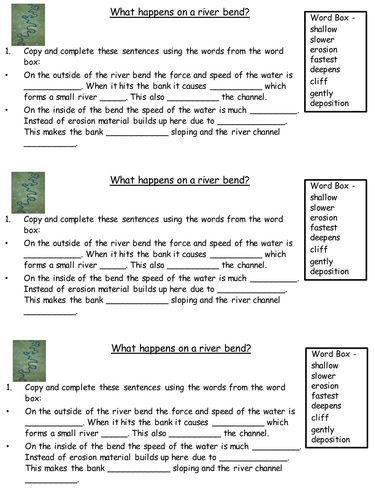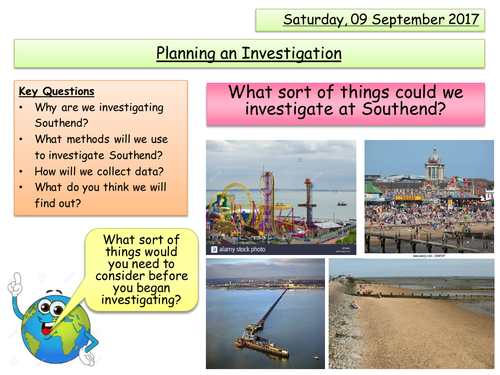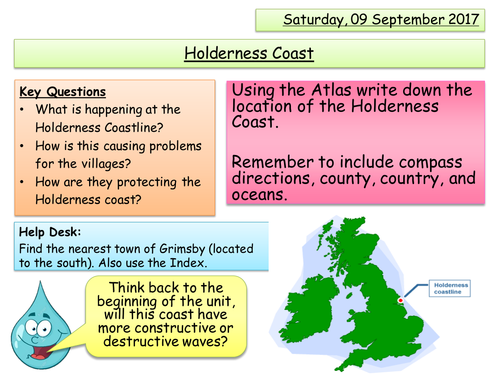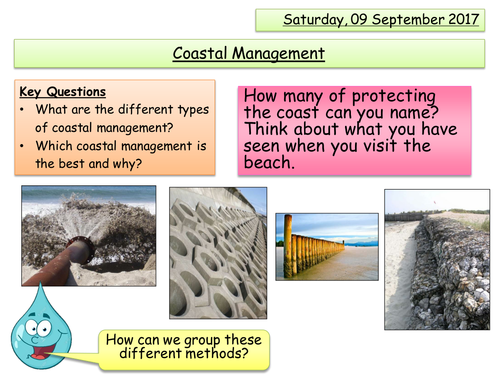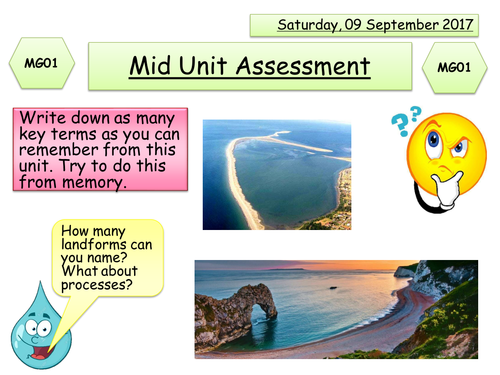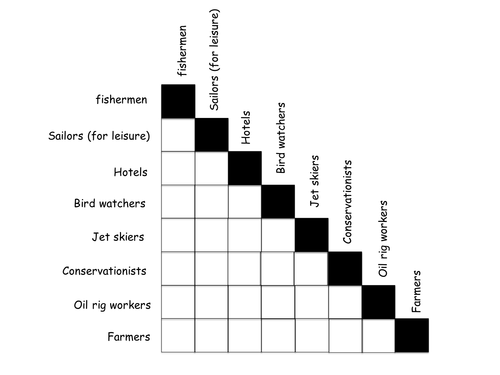
156Uploads
227k+Views
288k+Downloads
All resources

Sustainable Rainforest Management
This lesson is based around the new AQA GCSE specification. This is a lesson in the unit titled Living World. The main aim of this lesson is to cover the following element of the specification:
- Value of tropical rainforests to people and the environment.
- Strategies used to manage the rainforest sustainably – selective logging and replanting, conservation and education, ecotourism and international agreements about the use of tropical hardwoods, debt reduction.
NOTE - When it refers to page numbers please refer to the information provided.

A Tropical Rainforest - The Choco Rainforest
This lesson is based around the new AQA GCSE specification. This is a lesson in the unit titled Living World. The main aim of this lesson is to cover the following element of the specification:
A case study of a tropical rainforest to illustrate:
- Causes of deforestation – subsistence and commercial farming, logging, road building, mineral extraction, energy development, settlement, population growth
- Impacts of deforestation – economic development, soil erosion, contribution to climate change.
NOTE - When it refers to page numbers please refer to the information provided.

Deforestation
This lesson is based around the new AQA GCSE specification. This is a lesson in the unit titled Living World. The main aim of this lesson is to cover the following element of the specification:
- Changing rates of deforestation.
- Causes of deforestation – subsistence and commercial farming, logging, road building, mineral extraction, energy development, settlement, population growth
- Impacts of deforestation – economic development, soil erosion, contribution to climate change.
Credit to broadworks on slide 8 and 9.

Tropical Rainforests Characteristics
This lesson is based around the new AQA GCSE specification. This is a lesson in the unit titled Living World. The main aim of this lesson is to cover the following element of the specification:
- The physical characteristics of a tropical rainforest.
- The interdependence of climate, water, soils, plants, animals and people.
- How plants and animals adapt to the physical conditions.
- Issues related to biodiversity.
NOTE - When it refers to page numbers please refer to the fact file provided.

Global Ecosystems
This lesson is based around the new AQA GCSE specification. This is a lesson in the unit titled Living World. The main aim of this lesson is to cover the following element of the specification:
- An overview of the distribution and characteristics of large scale natural global ecosystems.
NOTE - When it refers to page numbers please refer to the information provided.

Ecosystems
This lesson is based around the new AQA GCSE specification. This is a lesson in the unit titled Living World. The main aim of this lesson is to cover the following element of the specification:
- The balance between components.
- The impact on the ecosystem of changing one component.
Bundle

River Landscapes in the UK
This bundle contains all but 2 lesson required to teach the River landscapes in the UK unit, which is part of the new AQA GCSE Specification.
The lessons missing are an example of a river valley in the UK to identify its major landforms of erosion and deposition and the example of a river mangement scheme.
I have included the first lesson of the unit for free so that you can get a feel for the style of lessons.

River Management
This lesson is based around the new AQA GCSE specification. This is a lesson in the unit titled River landscapes in the UK. The main aim of this lesson is to cover the following element of the specification:
- The costs and benefits of the following management strategies:
* Hard engineering - dams and reservoirs, straightening, embankments, flood relief channels
* Soft engineering - flood warnings and preparation, flood plain zoning, planting trees and river restoration.

Flood Risk and Hydrographs
This lesson is based around the new AQA GCSE specification. This is a lesson in the unit titled River landscapes in the UK. The main aim of this lesson is to cover the following element of the specification:
How physical and human factors affect the flood risk - precipitation, geology, relief and land use.
The use of hydrographs to show the relationship between precipitation and discharge.

Depositional Landforms - Rivers
This lesson is based around the new AQA GCSE specification. This is a lesson in the unit titled River landscapes in the UK. The main aim of this lesson is to cover the following element of the specification:
- Characteristics and formation of landforms resulting from deposition - levees, floodplains and estuaries.

Erosional and Depositional Landforms - Rivers
This lesson is based around the new AQA GCSE specification. This is a lesson in the unit titled River landscapes in the UK. The main aim of this lesson is to cover the following element of the specification:
- Charactersistics and formation of landforms resulting from erosion and deposition - meanders and ox-bow lakes.

Erosional Landforms - Rivers
This lesson is based around the new AQA GCSE specification. This is a lesson in the unit titled River landscapes in the UK. The main aim of this lesson is to cover the following element of the specification:
- Characteristics and formation of landforms resulting from erosion - interlocking spurs, waterfalls and gorges.

River Profile and Processes
This lesson focus on the new AQA GCSE specification. This is the first lesson in the unit title River Landscapes in the UK. This lesson covers the following elements from the specification:
- The long profile and changing cross profile of a river and its valley.
- Fluvial processes:
* Erosion - hydraulic action, abrasion, attrition, solution, vertical and lateral erosion.
* Transportation - traction, saltation, suspension and solution
* Deposition - why rivers deposit sediment.
NOTE - when it refers to page numbers please see the fact sheet provided.
Bundle

Coasts
This bundle contains a whole unit of work for coasts. This unit is designed for year 8's and aims to give them the basic knowledge and skills in the lead up to GCSE's. In addition to lessons, this bundle contains assessments and fieldwork that can be carried out.

Coastal Fieldwork
This lesson aims to allow students to conduct fieldwork based around the coast. This lesson contains 3 individual lessons:
Lesson 1 is a preparation lesson, where students think about what could be investigated at a coastal location, what methods and sampling could be used, in addition to coming up with a hypothesis. This lesson would need to be followed by conducting the fieldwork in a coastal location. Included in this lesson is an activity book that can used at a coastal location with groynes.
Lesson 2 is an assessment based lesson which gets students to present their findings, analyse their findings, before drawing conclusions of their findings.
Lesson 3 is then the feedback element where students are encouraged to improve their fieldwork skills.
NOTE - This lesson is based around Southend but is easily adaptable for any location with a groyne. Also note that MG03 is based around AO4 on the GCSE specification, but this has been reduced to what is expected from a year 8 student.

Holderness Coast
This lesson aims to allow students to gain an understanding of what is happening at the Holderness Coastline. It looks at the erosion taking place and the impact this is having on the local area. This is then followed by looking at the management strategies that Holderness has implement and the impact this has caused.
By the end of the lesson students will be able to answer the following key questions:
- What is happening at the Holderness Coastline?
- How is this causing problems for the villages?
- How are they protecting the Holderness coast?

Coastal Management
This lesson aims to allow students to gain an understanding of the different ways to manage the coast. It looks at a range of soft and hard engineering strategies, and encourages students to think about the advantages and disadvantages of these strategies, before debating which of these would be the best for a particular coast (this lesson uses Southend but this can easily be changed for a different location).
By the end of the lesson students will be able to answer the following key questions:
- What are the different types of coastal management?
- Which coastal management is the best and why?

Coastal Assessment
This lesson is an assessment based around coasts, designed for year 8's. This includes the assessment and all associated resources, in addition to a marking grid, and the feedback lesson, which also includes action points sheets (these will allow students to improve on certain areas, based on the weaknesses in their test).
NOTE - MGO1 is equivalent to the AO1 and AO2 objectives at GCSE. These have then been broken down into what I expect year 8 students to be able to achieve.

How we use the coast
This lesson aims to allow students to gain an understanding of the different ways we can use the coasts, in addition to the different conflicts that this can cause.
By the end of the lesson students will be able to answer the following questions:
- Who uses coastal areas?
- Why might conflict occur along the coast line?

Transportation and Depositional Landforms
This lesson aims to allows students to gain an understanding of longshore drift, deposition, and depositional landforms.
By the end of the lesson students will be able to answer the following questions:
- What other processes occur at the coast?
- Why does sediment get deposited along the coast?
- What is longshore drift and how does it work?
- What other landforms are formed at the coast and how are they formed?

